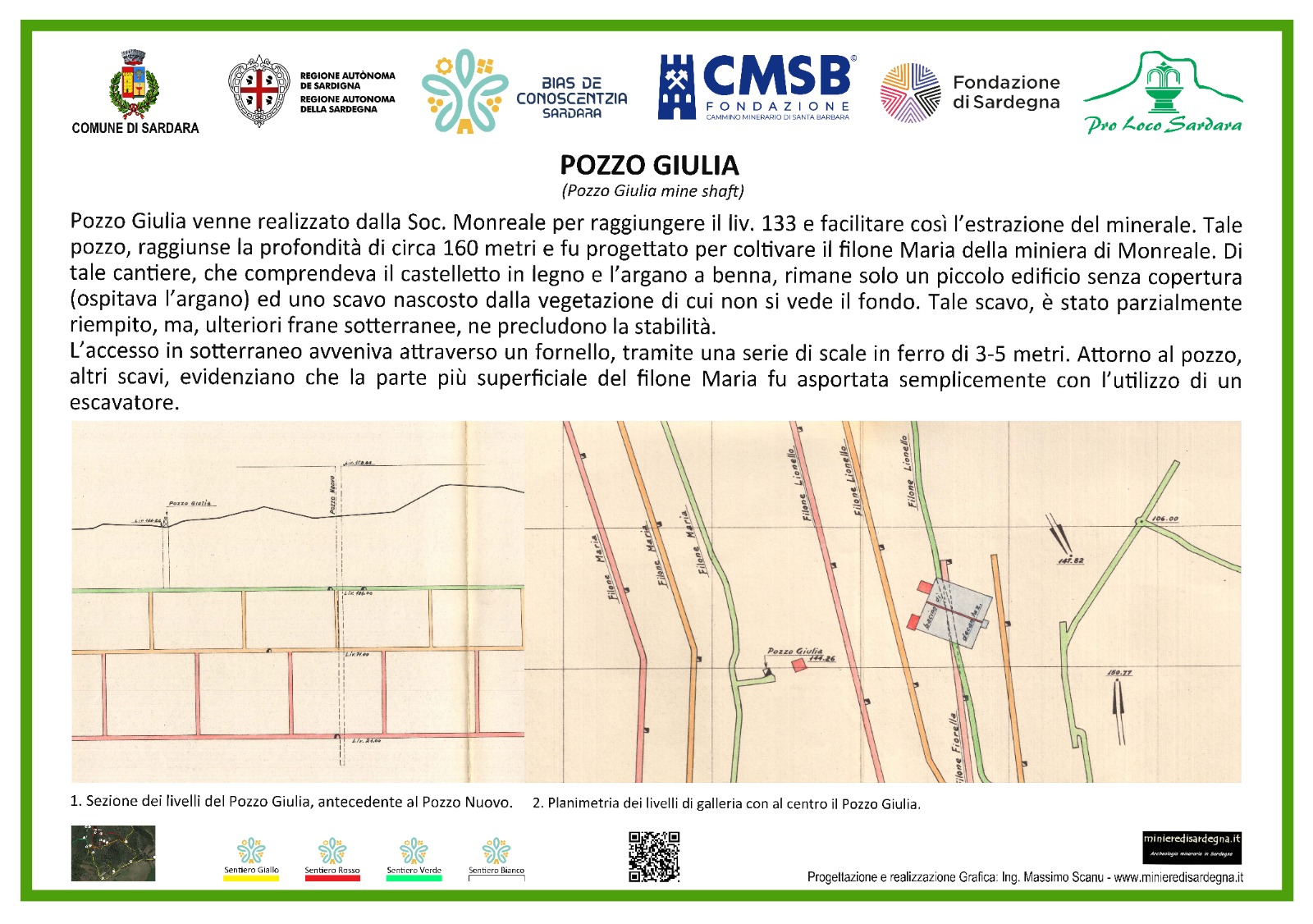
Pozzo Giulia venne realizzato dalla Soc. Monreale per raggiungere il liv. 133 e facilitare così l’estrazione del minerale. Tale pozzo, raggiunse la profondità di circa 160 metri e fu progettato per coltivare il filone Maria della miniera di Monreale. Di tale cantiere, che comprendeva il castelletto in legno e l’argano a benna, rimane solo un piccolo edificio senza copertura (ospitava l’argano) ed uno scavo nascosto dalla vegetazione di cui non si vede il fondo. Tale scavo, è stato parzialmente riempito, ma, ulteriori frane sotterranee, ne precludono la stabilità.
L’accesso in sotterraneo avveniva attraverso un fornello, tramite una serie di scale in ferro di 3-5 metri. Attorno al pozzo, altri scavi, evidenziano che la parte più superficiale del filone Maria fu asportata semplicemente con l’utilizzo di un escavatore.
Giulia Shaft
Giulia Shaft (Pozzo Giulia) was built by the Monreale Society to reach the liv. 133 and facilitate the extraction of ore. This shaft reached a depth of about 160 meters and was designed to cultivate the Maria strand of the Monreale mine. Of this building site which included the wooden headframe and the bucket winch, there remains only a small building without a roof (it housed the winch) and an excavation hidden by vegetation of which you can not see the bottom. This excavation has been partially filled, but further underground landslides preclude its stability. Access underground was through a stove, via a series of iron stairs of 3-5 meters. Around the shaft other excavations show that the most superficial part of the Maria vein was removed simply with the use of an excavator.
Pozzo Giulia
Pozzo Giulia wurde von Soc. Monreale, um die Lvl. 133 zu erreichen und so die Gewinnung des Erzes zu erleichtern. Dieser Brunnen erreichte eine Tiefe von etwa 160 Metern und wurde für den Anbau des Maria-Flieges der Mine Monreale geplant. Von dieser Baustelle, die das Holzschloss und die Eimerwinde umfasste, ist nur noch ein kleines Gebäude ohne Dach (die Winde beherbergte) und eine Ausgrabung, die von der Vegetation versteckt war, deren Boden nicht zu sehen ist. Diese Ausgrabung wurde teilweise gefüllt, aber weitere unterirdische Erdrutsche schließen ihre Stabilität aus.
Der Zugang in den Untergrund erfolgte über einen Herd, über eine Reihe von Eisentreppen von 3-5 Metern. Um den Brunnen herum zeigen andere Ausgrabungen, dass der oberflächlichste Teil des Maria-Strangs einfach mit einem Bagger entfernt wurde.



